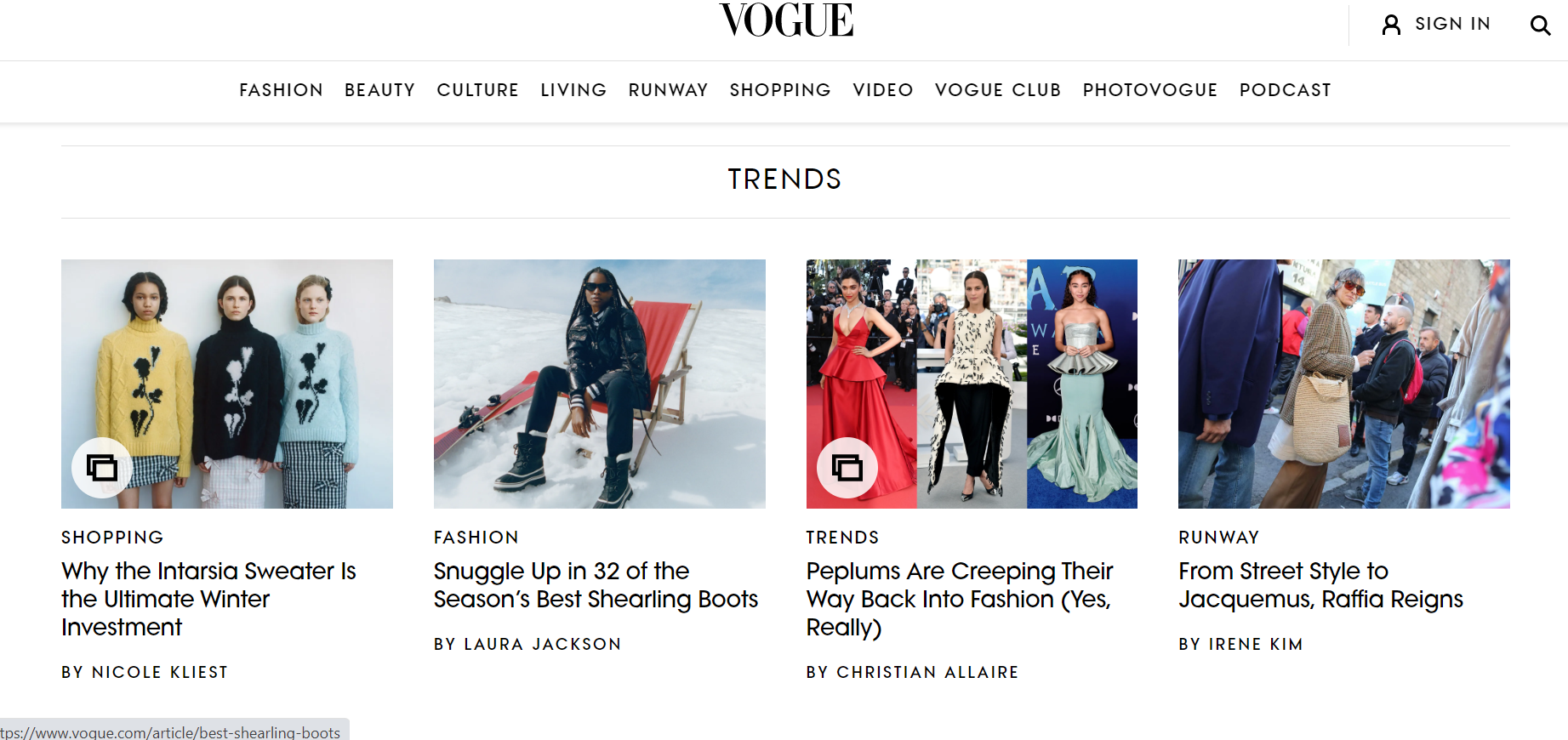Fashion Industry Statistics India
The fashion industry is one of the most important industries in today’s economy. Not only do fashion brands generate a great deal of revenue, but they also play an important role in shaping what people wear. In this blog post, we will explore some key statistics about the Indian fashion industry. From market size to growth rates to trends, read on to gain a better understanding of this vital sector.
The Indian Fashion Industry
The Indian Fashion Industry is valued at $30 billion and employs over four million people. India’s fashion industry is one of the most rapidly growing in the world. The country’s rich cultural heritage has contributed to the popularity of traditional Indian clothing, which is often adorned with intricate motifs and colorful designs.
India’s fashion industry is dominated by small businesses, which account for 95% of the total market. The country’s largest designers and brands are mainly based in Mumbai, Delhi, and Kolkata. In recent years, the fashion industry has been expanding into new markets such as Bangalore and Hyderabad.
The Indian fashion industry is highly competitive. Over 60% of all garment exports are generated by small businesses with annual turnovers below Rs1 crore (US$15,000). Foreign investors have been attracted to India’s fast-growing fashion sector due to its high growth potential and stable political environment. The government has also encouraged investment through tax breaks and relaxed import tariffs.
The Indian fashion industry faces several challenges including low quality products, a weak infrastructure, a lack of skilled workers, and a high cost of raw materials. However, the sector is seeing increasing investment from both foreign and domestic players due to its strong potential for growth.
The Indian Fashion Market
Ethnic diversity is a defining characteristic of the Indian fashion industry. The country has a large population of people from diverse cultural backgrounds, and as a result, there is great demand for different styles of clothing in India. The Indian fashion market is one of the most competitive in the world, and many high-end brands have set up operations in the country to take advantage of this opportunity.
The Indian fashion market is segmented based on region, namely Western India, Northern India, Southern India and Eastern India. Western India is the largest market with a share of about 43% of the total domestic sales, followed by Northern India (27%) and Southern India (15%). Eastern India accounts for about 6% of the total Indian fashion market.
The main consumers of Indian fashion are women aged 18 to 35 years. Men also purchase some clothes from time to time, but their purchases are significantly smaller than those made by women. Indians are very practical when it comes to clothing choice, and they often tend to buy outfits that can be used multiple times. This explains why most brands offer a wide range of colors and prints available in their products.
Indian designers have come up with unique concepts that appeal specifically to women in the country. Some popular brands that make use of local designs include Zara, H&M and Forever21. These brands cater primarily to youngwomen who are looking for trendy but affordable clothes.
The Growth of the Indian Fashion Industry
The fashion industry in India has seen a steady growth over the years. According to the recent report by The Economic Times, the value of the Indian fashion industry was estimated at Rs. 2,660 crore in 2016 and is forecast to grow at a CAGR of 18.3% through 2021.
The growth of the Indian fashion industry can be attributed to a number of factors such as rising consumer spending, increasing disposable income, growing awareness about international trends and styles, and expanding retail space. Additionally, demand from the domestic market is also an important factor contributing to the growth of the Indian fashion industry.
In terms of parameters that contribute to the growth of the Indian fashion industry, one key parameter is consumer spending. In 2016, consumer spending on apparel and accessories was estimated to be Rs. 1,820 crore, which is expected to grow at a CAGR of 19%. This indicates that there is strong potential for further expansion in this sector.
Another key contributor to the growth of the Indian fashion industry is increasing awareness about international trends and styles. According to a study by BMRB Research, nearly two-thirds (64%)of Indians aged 18-34 are aware about global trends and styles, which is higher than global averages. This indicates that there is high demand for international brands in India and provides impetus for further expansion of the Indian fashion industry.
Further impetus for continued growth in the Indian fashion industry comes from expanding retail space. In 2016, there
The Indian Fashion Industry
The Indian fashion industry is worth a staggering $22.5 billion and employs over 1.3 million people. The sector is growing rapidly, with exports increasing by 12% in 2013 compared to 2012. The main drivers of this growth are the increasing middle class and luxury market segments.
The Indian fashion industry is dominated by domestic brands, with only 7% of sales coming from international brands. The Indian market is also highly fragmented, with over 460 active designers. This lack of consolidation has led to high competition and low margins.
The key players in the Indian fashion industry are Hindustan Unilever (HUL), Godrej Consumer Products Ltd (GCPL), and Maxis Communications Ltd (MAXC). HUL is the biggest player in terms of revenue, followed by GCPL and MAXC.
Trends in Indian Fashion
Indian fashion has been rapidly evolving over the past few years, with new trends being introduced on a regular basis. The latest trend to take hold is the boho look, which is characterized by its relaxed and carefree style. Indian designers have also been focusing more on contemporary silhouettes in their designs, as opposed to traditional Indian shapes.
Another popular trend that’s been making waves in recent years is the urban streetwear look. This style is characterized by its high-waisted jeans and graphic T-shirts, and it’s becoming increasingly common to see models wearing this type of clothing on catwalks and in fashion magazines. Indian designers are also starting to experiment with futuristic styles, incorporating cutting-edge technologies into their garments for a more modern look.
There are several other trendy trends that are being explored by Indian fashion designers, including the romantic gothic look and the tribal print design. Whether you’re looking for something casual or formal, there’s sure to be a trendy designer clothesline featuring fashionable Indian clothes options available online or in store.
The Future of the Indian Fashion Industry
The future of the Indian fashion industry is looking bright. The country’s population is growing, and there are now more affluent people who are looking for stylish clothing. This has driven up demand for luxury goods, and this in turn has helped the fashion industry to grow rapidly.
According to a study by market research company Euromonitor International, the Indian fashion industry is expected to grow at a rate of 7.5% over the next five years. This will be partly due to rising disposable incomes, as well as increasing consumer spending on luxury items.
There are a number of companies that are benefiting from this growth in the Indian fashion industry. Some of these include luxury brands like Burberry and LVMH, as well as regional players such as Kanika Group and Bonmarche Stores India Pvt Ltd. All of these entities are investing in new production facilities and marketing campaigns, which is helping them to increase their share of the market.
This strong growth in the Indian fashion market is good news for workers in the sector. Many of them have experienced unemployment levels that are much lower than those found in other parts of the world, thanks to growing demand for luxury products. In fact, according to a recent report by global consultancy firm PwC, there were over 1 million jobs associated with the Indian fashion industry in 2017 alone.
Conclusion
The fashion industry is constantly growing and evolving, but what are some of the key statistics related to India’s fashion industry? According to a report by the National Association of Fashion Designers of India (NAFDNI), in 2017 alone, the Indian apparel market reached $27.5 billion. This represents an increase of 5.4% over 2016 figures. Moreover, NAFDNI predicts that by 2021, the Indian apparel market will be worth $38.87 billion. With such impressive growth rates, it is no wonder that many designers are looking to set up shop in India.








